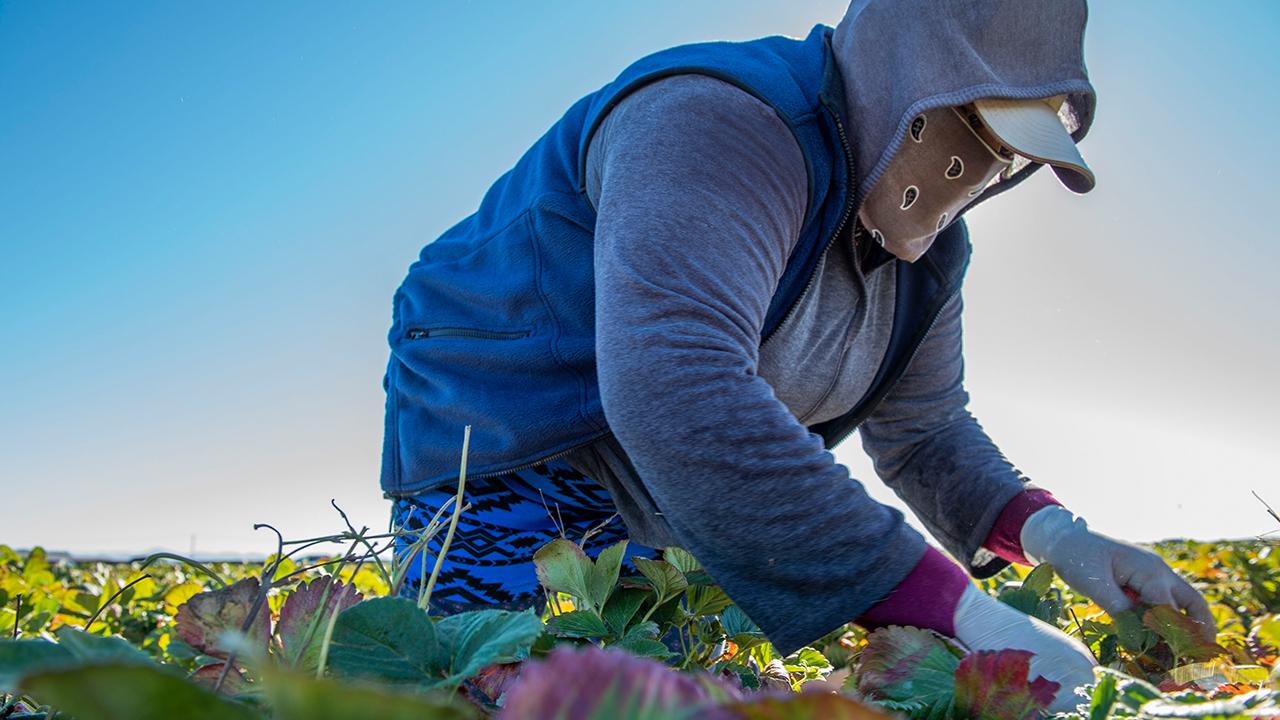
CDC provides guidelines for managing COVID-19 in agricultural settings
Farms, ranches and other agricultural worksites are essential to America’s food supply chain. The Centers for Disease Control and Prevention (CDC) has introduced interim guidance for agricultural workers and employers to facilitate preparation, prevention and management measures to help reduce the risk of transmission of COVID-19 in agricultural settings. In alignment with CDC guidelines, the Western Center for Agricultural Health and Safety (WCAHS) at UC Davis offers COVID-19-related materials and resources to aid agricultural workers and employers during these unprecedented times.
COVID-19 Resources from WCAHS
Print and video resources are available in both English and Spanish at the Western Center for Agricultural Health and Safety (WCAHS) at UC Davis website.

Agricultural worksites face unique challenges amid the spread of COVID-19. Close and frequent contact with coworkers in fields and packing houses often makes physical distancing, a cornerstone of COVID-19 prevention, difficult to implement. Shortages in essential supplies, including personal protective equipment (PPE) such as respirators, have added to the challenge of addressing the crisis in agriculture.
“I am pleased the CDC has developed workplace guidelines specifically for agriculture,” said Kent Pinkerton, professor of pediatrics in the school of medicine and WCAHS director. “Clear instructions and recommendations are urgently needed to ensure safe and healthy working conditions as agriculture enters into a time of heightened activity and production.”
The guidance provides strategies to identify at-risk practices and to implement appropriate worker screening, proper cleaning and disinfection and physical distancing of six feet between workers. It also outlines the proper use of PPE and the role of cloth face coverings at the workplace. The guidance emphasizes that workers should always be provided the appropriate PPE required by the specific job task, which may include half- or full-face respirators or a two-strap, disposable respirator (e.g., N95).
For general work duties, the CDC advises the use of simple cloth face coverings. Cloth face coverings are not a substitute for maintaining physical distance or using proper handwashing technique. “Bandanas and cloth face coverings can protect those around you if you are infected, but they do not protect the wearer,” Pinkerton noted.
Many farmworkers reside in shared housing and travel to and from work with others. The new CDC guidance provides recommendations for employer-provided housing and transportation that are relevant in community settings.
“We have developed a number of topic-specific articles and resources for western agriculture to make the technical guidelines accessible for growers and employers on-the-ground. We have also created a user-friendly employer checklist and a training guide, both of which have been updated to align with the new CDC guidance,” Pinkerton added.
Western Center for Agricultural Health and Safety
The mission of WCAHS is to improve the health and safety of those working in western agriculture. WCAHS faculty and staff conduct research on high hazard topics, including air quality, ergonomics, dairy pathogens and heat illness. Through its robust outreach program, WCAHS reaches more than 3,000 individuals annually with in-person health and safety trainings, health fairs and presentations.
WCAHS is funded by the National Institute of Occupational Safety and Health (NIOSH). The NIOSH agricultural centers were established as part of the Centers for Disease Control and Prevention (CDC) / NIOSH Agricultural Health and Safety Initiative in 1990. The Centers were established by cooperative agreement to conduct research, education and prevention projects to address the nation’s pressing agricultural health and safety problems. The Centers are distributed geographically throughout the nation to be responsive to the agricultural health and safety issues unique to the different regions.
Media Contact
Kent Pinkerton, Western Center for Agricultural Health and Safety at UC Davis, kepinkerton@ucdavis.edu
Heather Riden, Western Center for Agricultural Health and Safety at UC Davis, heriden@ucdavis.edu